The additional element "Hidden Field" is needed mainly in order to transfer some additional data from the site where the form is installed to the form itself. For example, the product name or its ID. The user does not need this information, but the site administrator needs to know. To add the "Hidden Field" element to the form, you need to click on the selected item or drag it to the right, then you will see the added element on the right:
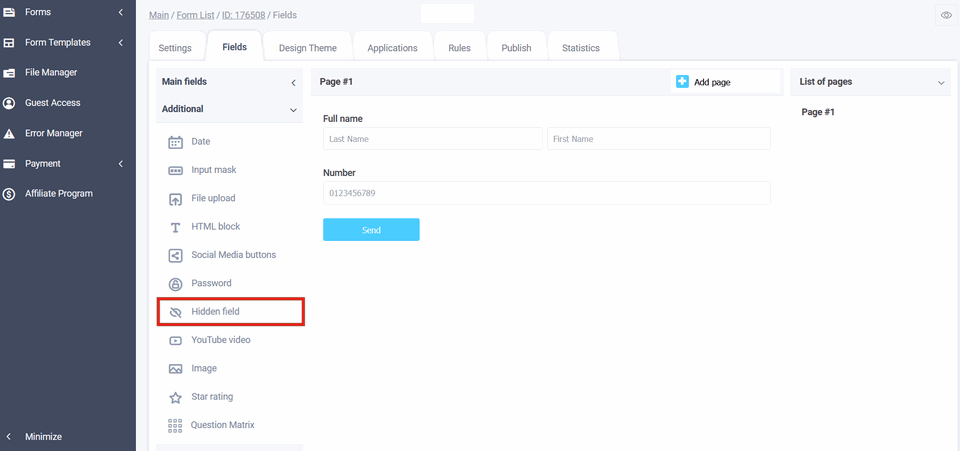
After you have added the "Hidden Field" element, click on the "Edit" icon and a pop-up window for editing this element will open in front of you:
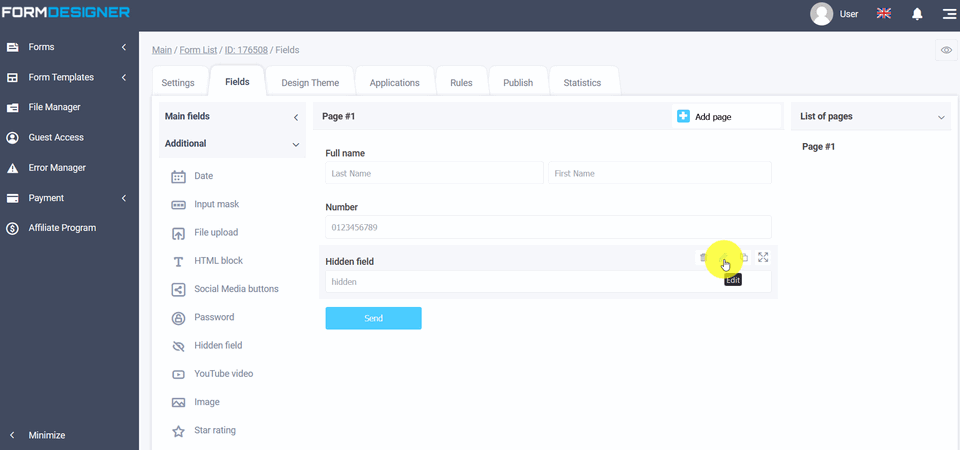
You can find out how to pass a value to a hidden field here - "Dynamic substitution of values in the form".
How to pass the value of macros to a hidden field
Using a hidden field, you can pass several macro values in integration modules. For example, you need Bitrix24 to transmit the values of several fields filled in and the selected answer option in the switch from the form to only one field of the Crm system. In our constructor, you can perform such an action by passing the value of a hidden field, into which, in turn, the values of the necessary fields are substituted. We will use macros to transmit field values.
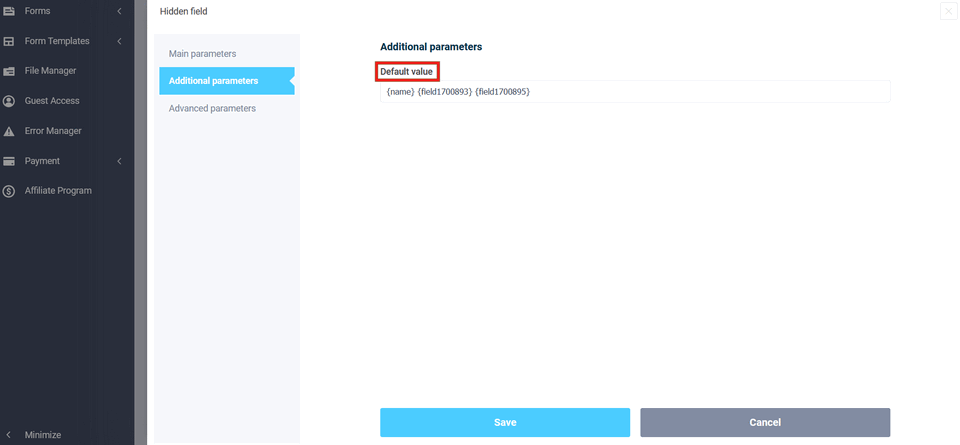
Having opened, macros (list of variables), we can select the necessary values that we will pass to the hidden field:
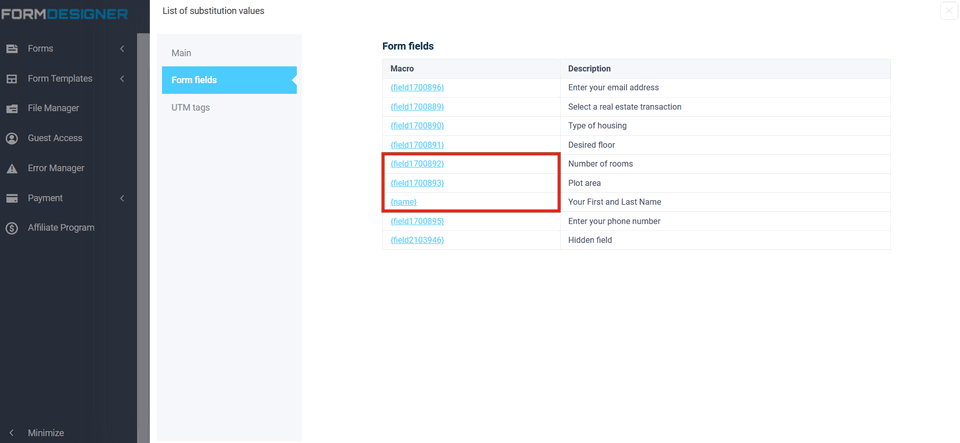
Macros are located on the left, fields from the form are located on the right. We took the macro values and inserted them into the "Default Value" field in the "Hidden Field" element editing mode, as in the previous screenshot. After sending the form, an application will be sent in the statistics and in the e-mail notification, where the specified data will be in the hidden field:
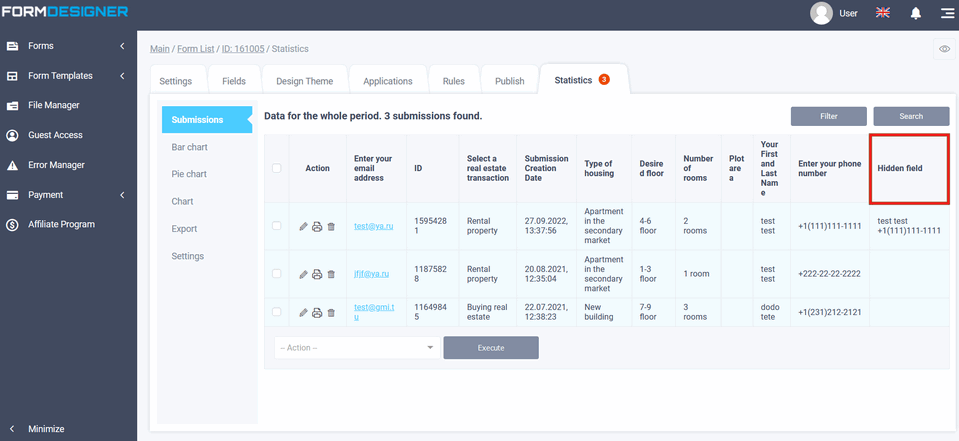
Also, in some situations, it is necessary to pass values only if certain user actions are performed, i.e. when he has fulfilled the specified conditions. For example, in logic, you can write:
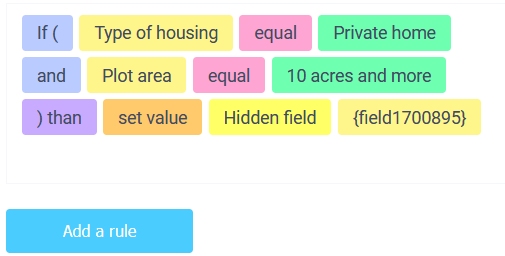
What if the user has chosen: a private home and 10 acres or more, then only then the specified 1 macros will be transferred to the hidden field.
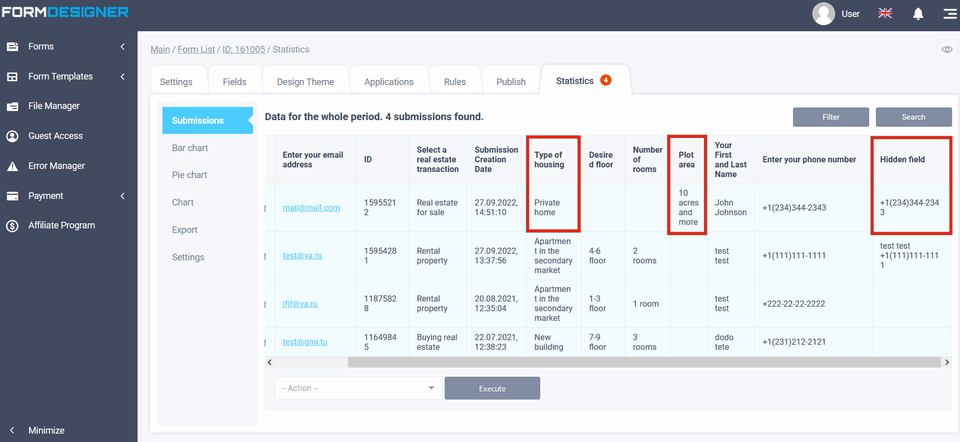
If the condition specified in the logic is not met, the macro values will not be set in the hidden field. Now the administrator can quickly respond to this field, for example, if he receives data in this field, he will process the client first. To use the data of this field in integration modules, it is enough to specify the macro of the hidden field and the corresponding field in the Crm system.
